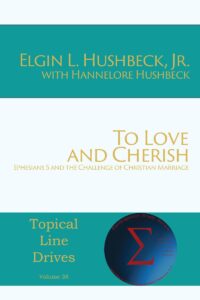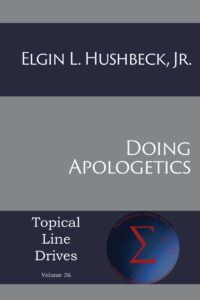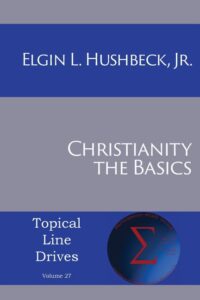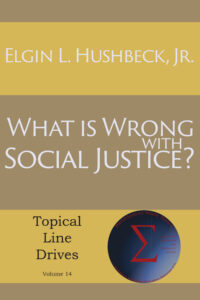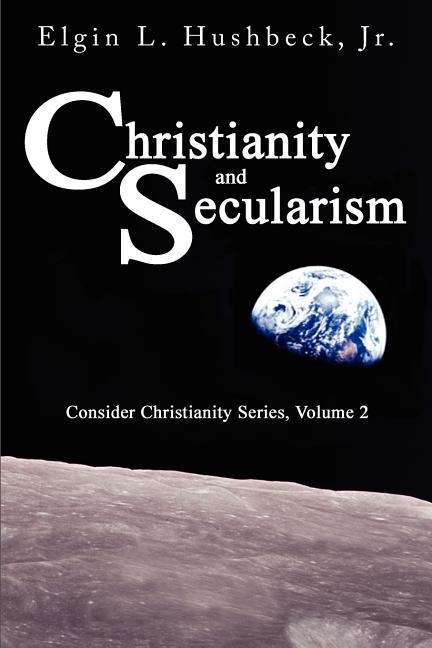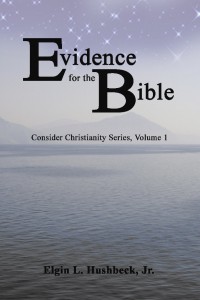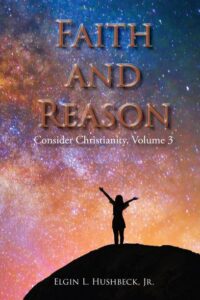Week Nine: Nov 6, 2011
This week we focused on the false teachers that are the subject of the letter. As a result we spend all of our time on verse 7. I will repeat the first part of this verse from last week.
Study
II. Body
a. Reject False Teachers (7-11)
7* – For many deceivers have gone out into the world. They refuse to acknowledge Jesus the Messiah1 is coming in flesh2. Any such person is a deceiver and an antichrist.
For (ὅτι -oti )
– While this verse marks a change in the letter from positive exhortation to warnings, it is connect to the previous verse. In context, John was glad that they were living in the truth because…
many deceivers have gone out into the world.
– Just as Christian missionaries that 3 John 5-6 says we should welcome have gone out
so had their counterparts. It is these counter parts that John is now going to warn them about.
refuse to acknowledge Jesus the Messiah is coming in flesh
– The word translated acknowledge (ὁμολογοῦντες – omologountes) is a legal term for contracts in terms of someone agrees and therefore promises to do something. It is not referring to a mere intellectual acceptance of doctrine, but implies action as well. In this light we can better understand John’s stress on both Truth (intellectual acceptance) and Love (doing). Both are inseparably linked. To really believe is to do.
– The phrase is coming is in the present tense, and is somewhat an unusual way of putting this. Normally we would expect has come as in a reference to the incarnation, or will come, as a reference to the second coming. But John puts this into the present tense. We can see in this a clue concerning the identity of the false teachers.
It is unlikely that John would be warning them about the common place dangers of which they all were aware. As such these false teachers were probably not from any of the well known religious groups of the time. For example, if he were referring to the Jews, he could have simply said that they denied that Jesus was the Christ.
Therefore these false teachers were most likely people who claimed to be Christian, but who were not spreading the truth, but a lie. Thus John’s use of the label “deceivers.” Understood in this light, John’s reference to “Jesus the Messiah is coming in flesh “ makes a lot more sense as it point to a particular group, the Gnostics, or probably more accurately proto-Gnostics. This is because full blown Gnosticism is a 2nd century movement.
Gnosticism may have had it start with Simon Magnus in Acts 8:9-24, a magician who claimed to be a Christian, but who really wanted to buy from the apostles the ability to give the Holy Spirit. It was built around a number of concepts borrowed from many beliefs. But they did see Christ as an important figure, and thus could be mistake for more orthodox Christians.
Another belief important in this discussion is that Gnostics drew a sharp distinction between the spiritual world which was good, and the material world which was corrupt. In fact they drew the divide so sharply that it resulted in a major problem. How could a spiritual god create a corrupt world? They attempted to solve this by postulating a very complex series of layers and intermediate actors in an attempt to separate the spiritual creator, from the corrupt creation.
This also caused a problem with Jesus and Christ for Gnostics made a division between the two. In Gnosticism, the body is material and therefore corrupt. But Christ is spiritual, and not corrupted. Gnosticism had several explanations for this, but they all centered on separating Jesus from the Christ. Irenaeus described such a view in his discussion of the beliefs of person named Cerinthus . In his book Against Heresies (Book 1.26.1)
Christ descended upon [Jesus] in the form of a dove from the Supreme Ruler, and that then he proclaimed the unknown Father, and performed miracles. But at last Christ departed from Jesus, and that then Jesus suffered and rose again, while Christ remained impassible, inasmuch as he was a spiritual being.
Irenaeus also tells us that Cerinthus was a contemporary of John, in the following amusing antidote (Against Heresies, Book III.3.4):
There are also those who heard from him that John, the disciple of the Lord, going to bathe at Ephesus, and perceiving Cerinthus within, rushed out of the bath-house without bathing, exclaiming, “Let us fly, lest even the bath-house fall down, because Cerinthus, the enemy of the truth, is within.”
John apparently new Cerinthus and is referring to him, or someone with similar beliefs. Thus his phasing of the false teachers as denying that Jesus is coming in the flesh, i.e., Jesus and the Christ are the same, always have been, and always will be.
Any such person is a deceiver and an antichrist.
– There is a translation issue here. It is not so much in the Greek text, or with what the author wrote, but rather with what the modern reader hears. We hear of the antichrist, and immediately think of the end times. But that is not what John is saying here. Rather John is stressing the magnitude of the error. They are not just wrong, but 180 degrees wrong.
– So the false teachers were most likely a group of traveling messengers bringing a gospel of Christ, but it was not the true Gospel but a false one. This is why John felt it so important to warn this church so that they would not be taken in.
Questions and Discussion.
The questions and discussion this week centered on the false teachers and modern applications. Did these teachers know they were spreading false doctrine, or did they really believe what they taught? My belief is that then, like now, one must draw a distinction between the founders of a religious movement, and the followers. Thus for example, it is very possible that Simon Magus was nothing more than a con-man. But con men deceive people, and as a result many were taken in by his teaching. By the time you get to the later part of the century when John is writing, it is very possible that the false teachers John was writing about were themselves deceived, and thought they were spreading the truth.
In terms of a modern application, there is a pretty general agreement that, whatever one thinks of Joseph Smith, Mormons as a group are wonderful people. Yet there is little doubt that they have been deceived and are deceiving others. Many of their converts come from evangelical denominations. For example, while Christians have historically taught, along with the Jews and Muslims, the belief in monotheism, that there is only one god, Mormon are henotheists, they believe that there are many gods, but they only worship one God. To justify this belief, one of the verses they cite is 1 Cor 8:5, which does say “as there be gods many, and lords many” (KJV).
Standing alone and out of context, this does seem to support the Mormon belief. But read in context it cannot. Paul here is addressing the issue of whether or not it was acceptable for Christians to eat meat sacrificed to idols. He argues that it is ok to eat the meat because, “We know that no idol is real in this world and that there is only one God.” (1 Cor 8:4) He acknowledges, what was in the first century city of Corinth very true, that there are many things that are called gods. Thus the ISV renders this as,
4Now concerning eating food offered to idols: We know that no idol is real in this world and that there is only one God. 5For even if there are “gods” in heaven and on earth (as indeed there are many so-called “gods” and “lords”), 6yet for us
there is only one God, the Father,
from whom everything came into being
and for whom we live.
And there is only one Lord, Jesus the Messiah,
through whom everything came into being
and through whom we live. (1 Cor 8:4-6)
Not only does the passage in context not support the Mormon claim, it actually refutes it, for it starts with a strong statement of monotheism. In addition to this the Mormon claim is further rendered impossible for it would completely undercut Paul’s argument. Paul argument is that “no idol is real in this world.” Since they do not exist, it is meaningless that the meat was sacrificed to them, so it is ok to eat. Yet the Mormon claim is that this passages is saying that other gods do in fact exist, which would destroy Paul’s argument. Thus the twisting of God’s word to teach doctrines antithetical to those historically accepted by Christians is not something that was only confined to John’s day, but rather continues today.
So does this make Mormons and Jehovah Witnesses “antichrists?” The answer here depends very heavily on the translational issue addressed above. Again the word antichrist is for the modern mind strongly linked to the end-times, and in this sense I would say no, they are not. But John was not referring to the end times, but rather to the type of error. He was referring to people who claimed to be bringing the truth, when what they were bringing was the opposite of the truth. They were not bringing the truth of the real Christ, but of a false, or antichrist. In this latter sense, they are antichrist’s, for the Jesus Christ preached by the Mormons, and by the Jehovah’s Witnesses, is one that is significantly different from the Jesus Christ that has historically been taught by Christians down through the ages, and I would argue significantly different that the Jesus Christ taught in the Bible. Yet given the modern understanding of the word “antichrist” the label does not apply.
Next week we will continue in 2 John 8
If you have question or comments about the class, feel free to send me an email at elgin@hushbeck.com and be sure to put “Epistles of John” in the header.
See here for references and more background on the class.
Scripture taken from the Holy Bible: International Standard Version®. Copyright © 1996-2008 by The ISV Foundation. ALL RIGHTS RESERVED INTERNATIONALLY. Used by permission. www.isv.org
Note: Some places I have modify the text from the ISV version. Passages that I have modified have been noted with and * by the verse number and the ISV text is included in a footnote.
Footnotes:
1 7 Or Christ
2 ISV: having become human
